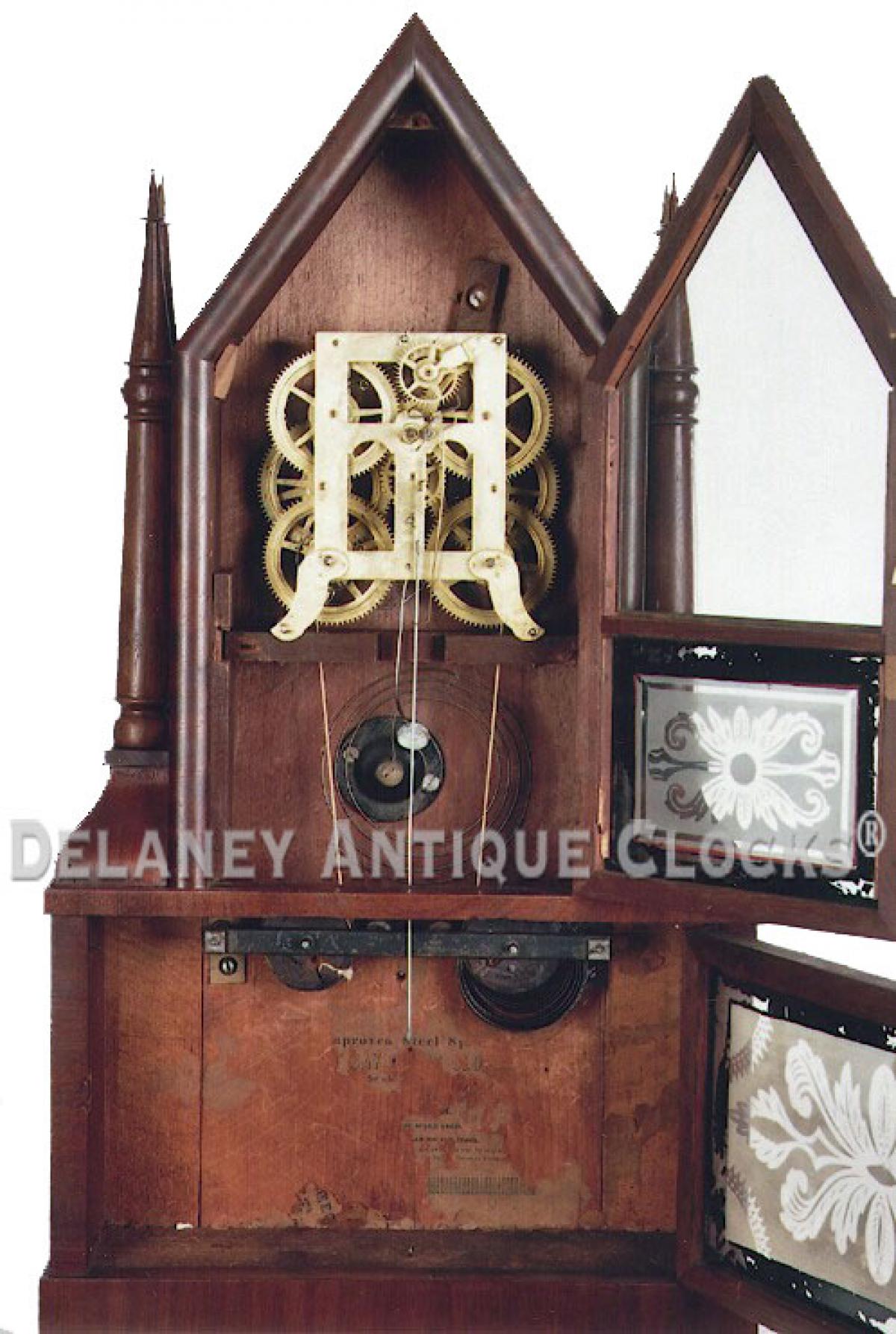Birge & Fuller Four-Candlestick Steeple on Steeple Clock. SS-130.
SS-130 Birge & Fuller Four Candlestick Steeple on Steeple Clock.
This is a very good example of a four-candlestick steeple clock manufactured by the firm Birge & Fuller of Bristol, Connecticut.
This is a highly collectible example due to the fact that it is powered by a detached fusee mechanism that is mounted below the movement to the backboard. The movement in this clock is constructed with brass and steel. It is typical in that it is designed to run for eight days on a full wind and strike the hour on a wire gong. Where it differs is in the manner in which it is powered, making it a desirable model. The most common method for a clock such as this to be powered is with coil springs that are positioned internally in the movement. When one winds this clock, cords connected to the winding arbor pull on conically shaped cones of fusees that intern tension the springs located behind them. This added mechanical feature was more costly to produce as compared to the standard coil spring-driven movement. Yet, they built it because, in theory, the fusees or the shape of the cones would provide more consistent power to the movement over the entire run of the clock. Today, because of the limited number of clocks made and the survivability of those that did, finding good examples such as this one is becoming increasingly more challenging.
The clock case is veneered with mahogany and retains a good finish and lovely brown color. The four candle sticks are mounted to the sides of the case. They are in good condition and have only minor losses to two tips. The reverse-painted tablets are original to this clock and are in good condition. They have experienced only minor losses to the paint in the black borders. They are decorated with a combination of painted linear designs that frame the acid-etched decorations. This acid etching is in excellent condition, and one would be able to see the motion of the brass pendulum bob through this design. The dial on this clock is painted on tin and features the traditional Roman numeral time ring. The Clockmaker’s label was originally pasted onto the backboard. Most of which is now gone. This clock measures approximately 25.25 inches tall by approximately 13.75 inches wide and 4 inches deep. It was made circa 1845.
John Birge and Thomas Fuller shared a successful partnership in Bristol, Connecticut, from 1844 through 1848. They made many steeple clocks with a considerable variety of movements.
Inventory number SS-130.
John Birge (1785 -1862) and Thomas Franklin Fuller (1798 - 1848) shared a successful partnership in Bristol Connecticut from 1844 through 1848. They made many steeple clocks with a large variation of movements. This firm is probably best known for making steeple on steeple clocks powered by wagon spring movements.




